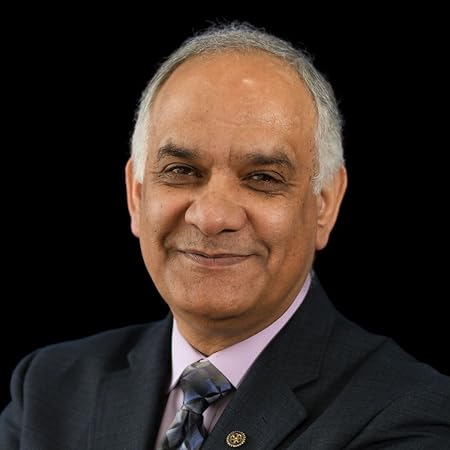This week on the Blog, we’re focusing our attention on the important topic of financial planning. We have one article on how to select a planner, while another gives us a real-life example of how the right planner can evaluate our retirement goals and show us the course corrections we need to make to attain them.
But this article from Kiplinger helps answer the question many of us hesitate to ask: how much will professional financial planning cost? The corollary questions are also important. How do planners decide how much to charge, and how do I as the client determine whether I’m getting good value in the services I’m paying for?
The advice from certified financial planner Carson McLean, author of the Kiplinger article, is simple. A five-minute review can tell you how much you’re paying for financial advice. If you feel you’re paying too much, there are good alternatives readily available.
Many Retirees Don’t Know How Much They’re Paying for Advice
How much does your financial planner cost you? A surprising number of clients can’t answer that question accurately.
“Most retirees have a good handle on their regular expenses,” says McLean. “They can tell you down to the penny what they spend on travel or health care. Yet even the savviest retirees struggle to know exactly what they pay their financial adviser each year.”
McLean adds that this lack of knowledge – even among high-net-worth investors – isn’t unusual. Part of the problem lies in the various ways planners charge their clients.
“Assets Under Management” is a Common Billing Standard
According to McLean, many financial planners make it hard for clients to gauge how much they’re being charged. “Advisory fees are often quoted as a percentage of assets and rarely presented as a bold, easy-to-find dollar amount,” he writes.
He quotes an industry source for context. On a $3 million account, the average charge is 0.88 percent – $26,400 per year. “Over a decade, that’s a quarter of a million dollars and often a surprise for many retirees,” McLean notes without irony. This method of using a percentage to determine fees is referred to as assets under management, or the AUM model.
According to an article from SmartAsset, over 90 percent advisers bill clients using the AUM model. McLean further breaks this down into advisors who are “fee-based” versus those who are “fee-only.” The difference is that fee-based advisers may also earn sales commissions for insurance, annuities or products you purchase through them.
AUM Model Remains the Most Widely-Used
“If you’re working with an adviser or considering one, this is likely the model you’ll encounter,” McLean writes. “The AUM fee model means you pay a percentage of your portfolio’s value each year.”
The process of determining the fee structure can vary widely. According to McLean, some firms use what he calls “blended rate tables (similar to tax brackets),” while others charge clients based on a flat percentage. Regardless, he says, “the core concept is the same: Your fee is based on a percentage of assets.”
McLean adds, “You can estimate your annual fee with some simple math. Multiply your adviser’s fee percentage by your current portfolio value (e.g. $2.5 million times 0.90 percent equals $22,500.)”
The Flat-Fee Model is Growing in Popularity
But as McLean’s Kiplinger article explains, change is in the air when it comes to financial planning. “While the AUM model is the industry standard,” he says, “retirees should also be aware of a different approach that is growing in popularity: the flat-fee model.” (McLean himself is a flat-fee-only financial planner.)
The concept is straightforward. “A flat-fee adviser charges a set, transparent dollar amount for services, regardless of portfolio size,” says the article. “Some flat-fee firms also offer ongoing, one-time or hourly engagements to match different client needs.”
McLean notes that flat-fee advisers generally offer a scope of services similar to their AUM counterparts. “This can include retirement income strategies, tax and estate planning, Social Security and Medicare optimization, and investment management,” he says. They often act as fiduciaries, which means they are legally bound to act in the client’s best interests and place the client’s needs ahead of all other considerations.
Assets Under Management Model Under Increased Scrutiny
According to McLean, the AUM model is beginning to come under more scrutiny from investors as they question its value. The reason: AUM fees can rise to the point where costs are out of proportion to services received.
“When a financial adviser takes a percentage of investments, regardless of whether they are actively managing new contributions or maintaining a conservative allocation, this could result in a disproportionate cost for retirees, which may not be worth the expense,” McLean writes.
He quotes Dr. Jim Dahle, founder of the White Coat Investor blog for physicians. Dahle writes, “If you were paying 1 percent of a $500,000 portfolio ($5,000 per year), that’s probably a fair price for good financial advice. But when the portfolio grows to $5 million ($50,000 per year)? I’m sorry, you’re being ripped off.”
McLean adds that fees can also impact portfolio performance. “For example,” he explains, “if you saved $5,000 in fees each year and kept it invested for 15 years at a 5 percent annual return, you’d end up with nearly $108,000 more for your retirement or your heirs.” Even small changes in fees can pay big dividends.
Flat-Fee Model Offers Transparency, Reduces Fee Anxiety
One attraction of the flat-fee model, says McLean, is that it allows clients to understand charges clearly and predictably. The model “offer[s] predictable, transparent pricing that retirees can budget for and help reduce anxiety about hidden costs,” McLean argues.
Still, despite McLean’s preference for the flat-fee model, he does acknowledge a few drawbacks. The three specifics:
Availability. “As fewer advisers offer this model, you may not have a flat-fee adviser in your area and may need to be comfortable engaging with a professional virtually,” McLean writes. He suggests visiting the National Association of Personal Financial Advisors which offers a search tool that allows users to filter by location and fee model.
Scope of services. “While many flat-fee firms offer a similar range and expertise in investment management and financial planning services,” says McLean, “it is important to confirm that they offer the scope of services you need for your situation.”
Cost differences. Just because a planner uses the flat-fee model, that doesn’t guarantee you’ll pay less for services. “A flat fee doesn’t always mean more cost-effective,” McLean states. “While flat fees are transparent, they can differ significantly from firm to firm.” His advice: Be sure to run the simple math when comparing flat-fee versus AUM models.
What You Pay versus What You Receive: How to Choose
McLean offers specific recommendations on what to do now that we better understand how financial planners charge for their professional services.
“Whether you are currently working with an adviser or exploring flat-fee alternatives, it’s essential to evaluate both what you pay and what you receive,” he suggests. “Use these questions to assess your existing arrangement or to compare different advisory models.” (For clarity, we’ve included McLean’s questions verbatim from his article.)
Ask for a clear, annual dollar amount. What will I pay in actual dollars this year? Does this fee increase as my portfolio grows, or is it truly flat?
Clarify what’s included. Does my fee cover only investment management, or does it also include comprehensive financial, tax and estate planning?
Compare models. Would a flat fee or a percentage-based fee be more cost-effective for my needs now and in the future? Am I receiving the same level of service with each option?
Understand service delivery. If flat-fee advisers are not available locally, am I comfortable working with an adviser virtually?
He concludes with this common-sense advice. “Taking the time to ask these questions can help ensure you are not overpaying for advice and that your fee structure truly supports your long-term retirement goals. As more options become available, choosing the right approach allows you to keep more of your wealth working for you.”
Rajiv Nagaich – Your Retirement Planning Coach and Guide
The long-awaited book by Rajiv Nagaich, called Your Retirement: Dream or Disaster, has been released and is now available to the public. Retirement: Dream or Disaster joins Rajiv’s ground-breaking DVD series and workbook, Master Your Future, as a powerful planning tool in your retirement toolbox. As a friend of AgingOptions, we know you’ll want to get your copy and spread the word.
You’ve heard Rajiv say it repeatedly: 70 percent of retirement plans will fail. If you know someone whose retirement turned into a nightmare when they were forced into a nursing home, went broke paying for care, or became a burden to their families – and you want to make sure it doesn’t happen to you – then this book is must-read.
Through stories, examples, and personal insights, Rajiv takes us along on his journey of expanding awareness about a problem that few are willing to talk about, yet it’s one that results in millions of Americans sleepwalking their way into their worst nightmares about aging. Rajiv lays bare the shortcomings of traditional retirement planning advice, exposes the biases many professionals have about what is best for older adults, and much more.
Rajiv then offers a solution: LifePlanning, his groundbreaking approach to retirement planning. Rajiv explains the essential planning steps and, most importantly, how to develop the framework for these elements to work in concert toward your most deeply held retirement goals.
Your retirement can be the exciting and fulfilling life you’ve always wanted it to be. Start by reading and sharing Rajiv’s important message. And remember, Age On, everyone!
(originally reported at www.kiplinger.com)


